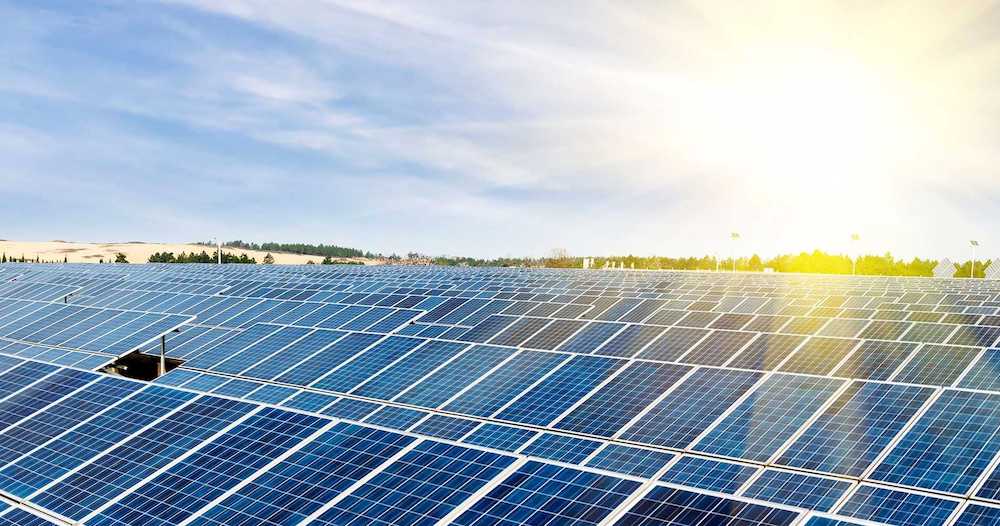By Jeff Ferry, CPA Research Director
Safeguard tariffs imposed by President Trump on imported solar cells and panels have been in effect for just over a week, but already we’re seeing moves to boost US solar production in response. No fewer than nine solar manufacturing companies are planning to launch or expand solar manufacturing in the US, according to our latest information. This is great news for the US solar industry, because it shows that tariffs can produce the intended effect of boosting a US industry, and with it jobs and research and development. It further suggests the US has the opportunity to regain its leadership position in this critical industry.
At the end of January, Chinese solar manufacturer JinkoSolar confirmed that it is has decided to invest $410 million in a new solar manufacturing plant in Jacksonville, Florida. The plant will hire a workforce of 400 this year, at an average annual pay of $46,000, with another 400 workers slated to be added in 2019. Meanwhile, Taiwanese consortium United Renewable Energy is also planning to build a solar module production facility in the US.
Foreign-owned manufacturers producing on our shores are good to have, because they bring physical production capability and they help our people to build their engineering and production skills. Equally important, they also create a seedbed for US engineering ingenuity, enabling us to build our own companies. There are already a number of such players in the industry and two are now engaged in expansion plans, partly in response to the tariff decision.
SolarTech Universal, based in Riviera Beach, Florida, is seeing increasing demand for its premium solar panels, which offer better performance, and sell for some 40-50 percent more than mass-market panels. CFO Frank Cestero tells us the company is moving from one shift a day to three shifts a day by year’s end. The company is also looking into opening a second facility, with favored locations now under consideration including Puerto Rico, Alabama, and Tennessee. SolarTech is a smaller company, with 50 employees today, but that number is clearly heading upwards. Cestero says the tariff has been a boon to his business, particularly because the free entry of up to 2.5 gigawatts of solar cells allows SolarTech to import cells tariff-free and build them into their proprietary modules. “The tariff has absolutely benefited us,” Cestero tells us. “It’s increased the cost of competitive products and 80 percent of the competition is imported.”
On the other side of the country, venture-backed California startup Solaria is focused on expanding production of its solar modules. According to CEO Suvi Sharma, Solaria is working on expanding a pilot production line in Fremont, California into a permanent production line, to complement its existing production in South Korea. Sharma is looking at locating roughly one-third of total production in the US. He says that even before the tariff decision, Solaria had decided to expand US production because a company functions best when R&D and production take place in the same or adjacent locations, and that some customers prefer US-produced panels. “Some large projects and customers favor US-made product and will pay a premium for it,” Sharma tells us. Although Sharma will be paying some tariff fees on imports now, in the long term he says the tariffs will benefit Solaria by making imported panels more expensive. “The tariff has a definite impact on how we view expansion in the US and overseas, and it works in favor of more manufacturing in the US,” Sharma says.
Solar Supply Chain
This is a great start, but the US industry must not become complacent. We need more of the entire supply chain located in the US—or at least in friendly nations. We need to see more US-based companies commit to expanding production of all-important solar cells (the silicon semiconductors that convert sunlight into electricity), and even further upstream, the chipmaking equipment and wafers that are equally important elements of the supply chain. And we need to counter Chinese efforts to dominate these markets.
In the months before the ITC recommended a safeguard tariff, and the President approved it, the solar installers’ lobbying group, the Solar Energy Industries Association (SEIA) orchestrated a barrage of publicity claiming that tariffs would lead to an industry downturn and layoffs. The SEIA was likely influenced by the fact that its board members, Chinese manufacturer Trina and French-owned manufacturer SunPower, were both utterly opposed to tariffs.
However, installers are telling us that the market is healthy today, and on track for double-digit growth this year. In fact, the price increases have yet to be felt by end-customers, because last year distributors filled their warehouses with Asian panels in advance of the tariff. But installers seem confident that this year should see some 10-15 percent growth in installations over last year, even with price increases impacting demand later in the year. Oil and gas prices are rising, and federal and state tax credits and incentives continue to give solar a boost.
So far, it looks like the sun is shining on a new trade policy and hopefully a new industrial strategy too.













